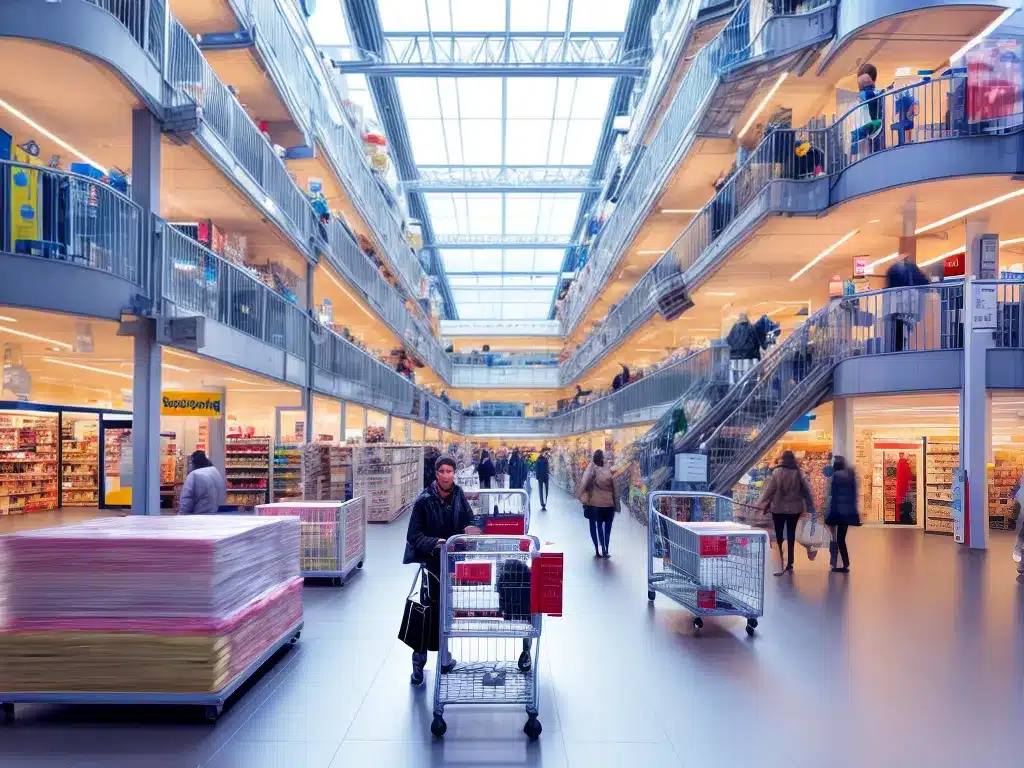
IoT in Retail: Innovative Use Cases for Connected Shopping
The Internet of Things (IoT) is transforming the retail industry. By connecting physical objects to the internet, IoT allows retailers to gain valuable insights, automate processes, and create smart in-store experiences. Here are some of the most innovative ways retailers are leveraging IoT technology:
Enhanced In-Store Experiences
IoT sensors and beacons allow retailers to track customer movements and behaviors in real-time. This data can be used to:
- Send personalized promotions to shoppers when they enter the store
- Guide customers to products they might be interested in
- Adjust in-store navigation to reduce congestion in popular areas
- Automatically restock shelves when items run low
For example, Nordstrom uses WiFi tracking to identify when a loyal customer enters the store. Store associates are notified via mobile app so they can greet the customer by name and provide personalized service.
Smart Fitting Rooms
Connected fitting rooms are a hot IoT application in retail. Sensors in the room can detect which items a customer brought in to try on. This enables features like:
- Mirrors that suggest different sizes, colors, accessories etc based on items brought in
- Digital signage outside the room that updates the waitlist when a room will soon be available
- Associates instantly notified when a customer needs a different size
Brands like Ralph Lauren and Rebecca Minkoff have adopted smart fitting rooms to deliver individalized, interactive experiences.
Automated Inventory Management
IoT gives retailers unprecedented visibility into inventory levels across multiple locations. Sensors can track goods through the entire supply chain. Retailers can use this data to:
- Automatically reorder items when stock runs low
- Optimize warehouse layouts and shipping routes
- Identify losses and inefficient processes
- Improve demand forecasting and inventory planning
This results in lower costs and less waste from spoilage or theft. Companies like Amazon Go use sensor fusion and AI to detect exactly when a product is taken off the shelves. This enables automated checkout without registers.
Enhanced Loss Prevention
Connected cameras, sensors, RFID tags and more enable advanced loss prevention. IoT technology can:
- Alert staff when a high value item is removed from a secure area
- Track when an item is removed from the store without payment
- Detect potential theft or vandalism events for rapid response
Walmart uses facial recognition software at many locations to identify known shoplifters. Some retailers also use connected alarm tags that activate when someone leaves the store with an unpaid item.
Immersive Digital Signage
IoT-enabled digital signage provides engaging experiences that go beyond static print ads. Interactive screens can:
- Display different content based on customer demographics and preferences
- Change dynamically as customers approach to catch their attention
- Offer product locators, promotions and detailed information on demand
- Provide tailored recommendations for each shopper
For instance, Sephora installations combine facial recognition, digital signage and augmented reality. Customers can virtually “try on” different makeup products at the touch of a button.
Optimized Self-Checkout
Many retailers are adopting self-checkout lanes to improve customer convenience and reduce labor costs. IoT advances are making these systems faster and more secure via:
- Smart scales that automatically identify items as they are added
- Smooth integration of promotions and digital coupons
- Frictionless payments via mobile wallets and NFC
- Video monitoring to prevent theft at unmanned stations
Sam’s Club self-checkout stations use computer vision, sensors and RFID to detect what items are placed in the cart. This enables automated checkout without having to scan barcodes.
In summary, IoT creates game-changing possibilities in retail, from personalized customer experiences to total inventory visibility. As IoT adoption accelerates, retailers should actively explore innovative ways to leverage connected, intelligent systems across the value chain. The companies that embrace IoT will gain a distinct competitive advantage.












